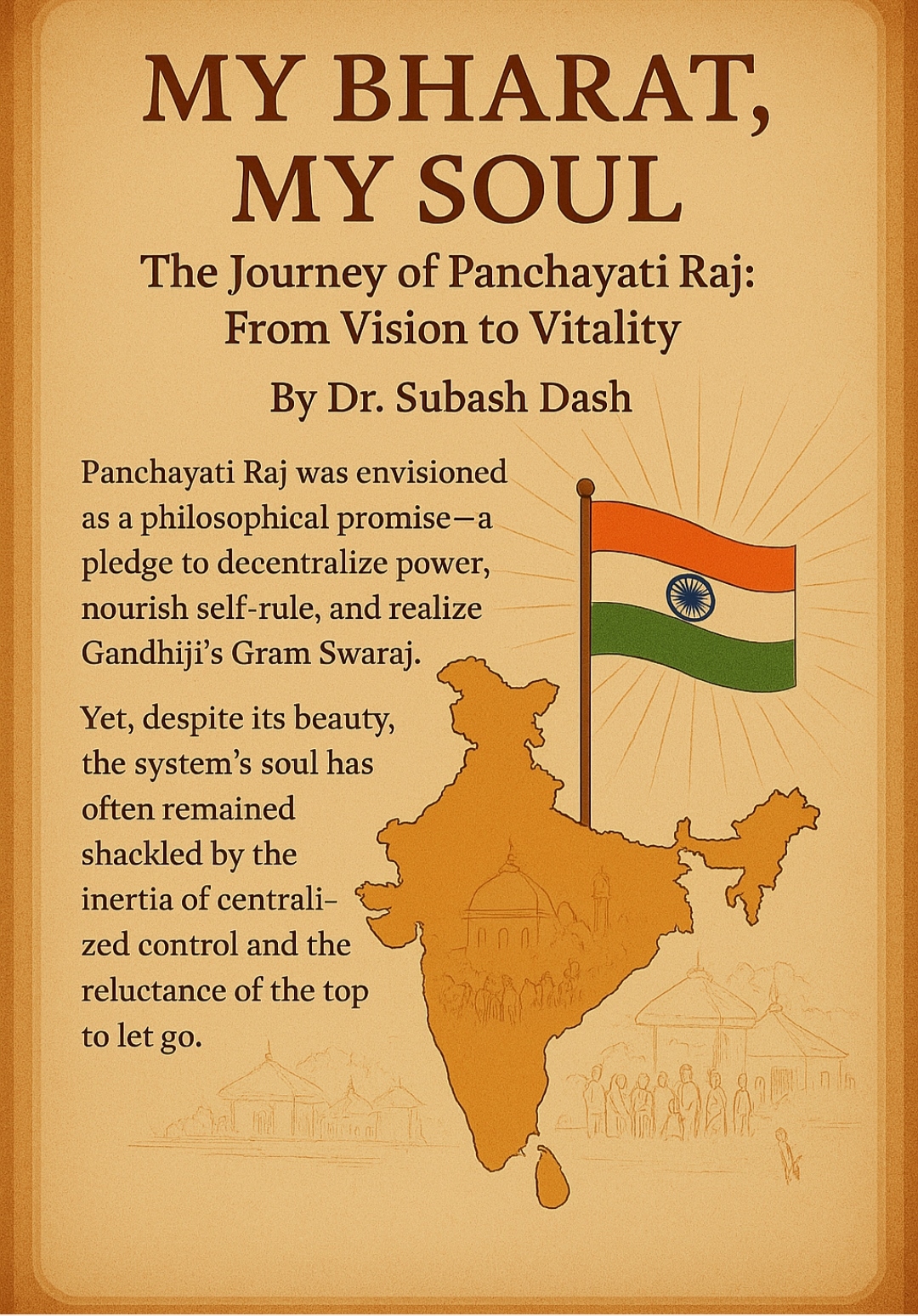
MY BHARAT: MY SOUL.
THE JOURNEY OF PANCHAYAT RAJ : FROM VISION TO VITALITY.
✨ My Bharat, My Soul
The Journey of Panchayati Raj: From Vision to Vitality
By Dr. Subash Dash
*The Spirit Behind the System*:-
Panchayati Raj was never merely a governance mechanism. It was a philosophical promise—a pledge to decentralize power, nourish self-rule, and realize Gandhiji’s Gram Swaraj. The three-tiered system, born from the soil of ancient village sabhas and reborn through modern constitutional reform, held the dream of empowering every citizen, especially in rural India, to co-create their destiny.
Yet, despite its beauty, the system’s soul has often remained shackled by the inertia of centralized control and the reluctance of the top to let go.
* The Origins: A Timeline of Dharma and Determination
- 1952: Community Development Programme laid the groundwork.
- 1957: Balwant Rai Mehta Committee introduced the three-tier model.
- 1992: 73rd Amendment gave PRIs constitutional status—an act of democratic deepening.
Each milestone emerged from the belief that India’s unity would be strongest when built from its grassroots.
⚖️ The Failures: When the Dharma is Delayed
Despite decades of effort, the percolation of power often meets resistance. Top-level reluctance, bureaucratic bottlenecks, and tokenistic devolution have prevented true local autonomy. The irony: leaders who swear by democracy sometimes fear its full flowering in their own backyards.
- Lack of financial independence
- Interference from higher political echelons
- Skill gaps among elected representatives
These are not failures of the system’s spirit, but of its implementation.
🌱 Successes: Sprouts of Hope in Indian Soil
- Over 3 million representatives, including 1.3 million women, now serve at the local level.
- In states like Odisha, community-led innovation has uplifted livelihoods and governance.
- Digital platforms and citizen monitoring are bringing transparency and literacy to remote regions.
India’s shift from illiteracy to literacy, from passivity to awareness, is reshaping PRIs into temples of democratic action.
Uniting India Through Local Self-Governance
In a nation as plural and vast as Bharat, unity cannot be enforced—it must be cultivated through participatory systems. Panchayati Raj embodies this ethos: every voice matters, every village belongs.
When empowered at the base, these institutions can:
- Prevent extremism by fostering belonging
- Cultivate leadership from within communities
- Safeguard cultural heritage and local wisdom
- Deliver justice through proximity and empathy
This model is India’s quiet revolution—one that protects her unity not by decree, but by dialogue.
🪷 The Path Forward: Leadership as Lok Dharma
India needs leaders who emerge from community soil, not just political schools. Panchayat representatives must be trained, respected, and spiritually awakened to lead with integrity.
Let us reimagine the Panchayat not as an administrative cell, but as a cradle of democratic dharma—where Sanatan values meet civic responsibility.
